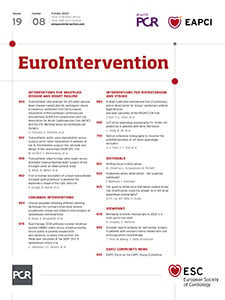“Twice and thrice over, as they say, good is it to repeat and review what is good.”
− Plato
In 2023, peer reviewing is still the cornerstone of the process of evaluating and publishing manuscripts in scientific journals, yet it may be criticised1. As such, it plays a vital role in the construction of our community’s medical knowledge. The principle has remained unchanged for years: a peer, recognised for his or her knowledge of a given subject, accepts, on a voluntary basis and on his or her own time, to anonymously evaluate a scientific work by assessing its methodological quality, the relevance of the results and their integration into the global literature, without any financial or material compensation and without any direct benefit. The indications given by the reviewer are then used by an editor to decide whether to accept, revise or refuse publication of the manuscript.
The review phase is a time-consuming process, requiring a precise methodology that was clearly detailed by R. Byrne in a previous issue of EuroIntervention2. Clear guidance by editors about the tasks and the scope of the review process is key to efficiency13. Ultimately, the review should help to answer the 3 fundamental baseline questions: Are these data new? Are they true? Are they important?
There is no denying that manuscript reviewing is a demanding activity for the person carrying it out. In the medical field, professionals are involved in many other daily tasks, starting with patient care (which is our fundamental mission), but also administrative tasks, research projects, and so on. At the same time, the proliferation of manuscript submissions around the world, coupled with the increase in the number of new journals, means that review requests are exponentially increasing. As a result, professionals involved in peer reviewing can sometimes question the meaning of this activity, and the value of devoting time to it that might be better spent elsewhere. Solutions based on artificial intelligence technologies are slowly being found and could, in the future, facilitate the whole review process, particularly in terms of adequate reviewer identification, plagiarism detection and adjudication of the opinions of the reviewers4. However, fully automated reviews (which would have the theoretical advantage of limiting conflicts of interest and biases inherent in potential competition between authors and reviewers within a specific research theme) have not yet emerged, and human involvement remains indispensable.
When you agree to review a manuscript for EuroIntervention, you need to remember why it remains a pivotal act. First and foremost, it is an act that could almost be described as militant. Meticulous reviewing helps to maintain the excellence of a journal by enabling the publication of quality articles, which makes it possible to present new data to as many people as possible. This represents an altruistic contribution to the community that should not be, in our opinion, financially rewarded. This point is becoming increasingly important with the proliferation of “predatory” journals, which sometimes charge high prices for risky publications that have been subjected to an inadequate evaluation process.
Reviewing can also be seen as a process of indirect assistance to authors, often enabling them to improve the quality of their data and strengthen their manuscript through the successive revision rounds. Accepting the principle of peer reviewing is also the assurance of reciprocity, when roles are exchanged and the reviewer becomes the author.
On a personal level, reviewing a manuscript is always an enriching experience, enabling the reviewer to deepen their knowledge of a given subject or to discover new approaches and solutions to a given problem. It also allows one to keep abreast of the latest advances in a given research topic. The review process can also be educational, as it can be a way of teaching younger members of a team how to critically evaluate scientific work, when the process is shared between a junior and a senior member.
In conclusion, in 2023, peer reviewing remains a noble and essential task, since, without it, the quality of science could be seriously endangered. Reviewers should take this responsibility seriously and, in the interests of time and quality of work, be selective in their acceptance of reviewer commitments to those topics and journals considered of interest. When accepting a review, one should always keep in mind that reviewing cutting-edge manuscripts provides the opportunity to improve both as a physician and as a scientist.
Conflict of interest statement
N. Amabile and G. Stefanini have no conflicts of interest to declare in relation to this manuscript.

